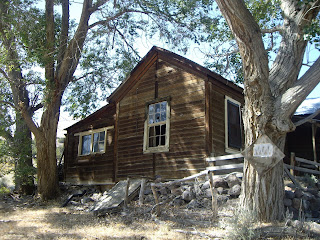Olinghouse

Early in the 1860s, during the beginning of the earliest Comstock boom, prospectors pushing out from the Virginia City area discovered the Olinghouse district, located about 30 miles northeast of Virginia City. Olinghouse was never very large, but it produced enough ore to support nearly continuous mining operations from the mid-19th century to the present. Records indicate that, at one time, this little mining camp advertised itself as “The Biggest Little Gold Camp in Nevada”. The town was first named, "Ora," it later took the name of local sheep man, Elias Olinghouse, who settled in Wadsworth and had a summer range at the base of the Pah Rah mountains. As prospecting increased, Olinghouse was caught up in the mining fever, buying several claims and erecting a small stamp mill in 1903 to process ores.
A post office was opened in 1898 and a small business district developed over the next decade, which included hotels. saloons and restaurants Both electric and telephone service were installed in 1903, and in 1906 a railroad was built to Wadsworth to transport the ore to the new mill and refinery in the valley below. However, during this same time, the district began to suffer a major decline in production, and all of the larger mines began to close. Smaller-scale gold, copper, and tungsten mining persisted through the 1930s. After that, commercial mining all but ceased. A few hardy souls stayed on, endlessly searching for what others had missed. A large placer operation was attempted in the 1980s, at the eastern foot of the district, but little commercial production ever came of this work.
Today, explorers will find a the dilapidated remains of wooden cabins and homes, mostly uninhabited, some mill ruins, mine shafts, an abandoned ranch house and, and a little further north, a modern open pit gold mining operation, which opened in the 1980s. As you approach the town, you will find an old miner's shack on your left. After passing a few of the "newer" homes, you reach the wooden remains of what looks like a small milling operation. Climbing up the hill behind the crumbled wooden mill site, there is a fenced off area with no trespassing signs.
We took pictures of the old abandoned houses, both inside and out. It is always an incredibly eerie feeling to wander about where others have spent portions of their lives. In some of the abandoned abodes we found furniture, old food remains and clothes. It was as if, in some cases, the occupants just picked up and left. We wonder what their stories may have been. We found out later that other ghost town enthusiasts had been threatened with a gun by some sort of caretaker. We saw no sign of anyone in the area on the day we were there, but that’s not to say we weren’t being watched.




Comments